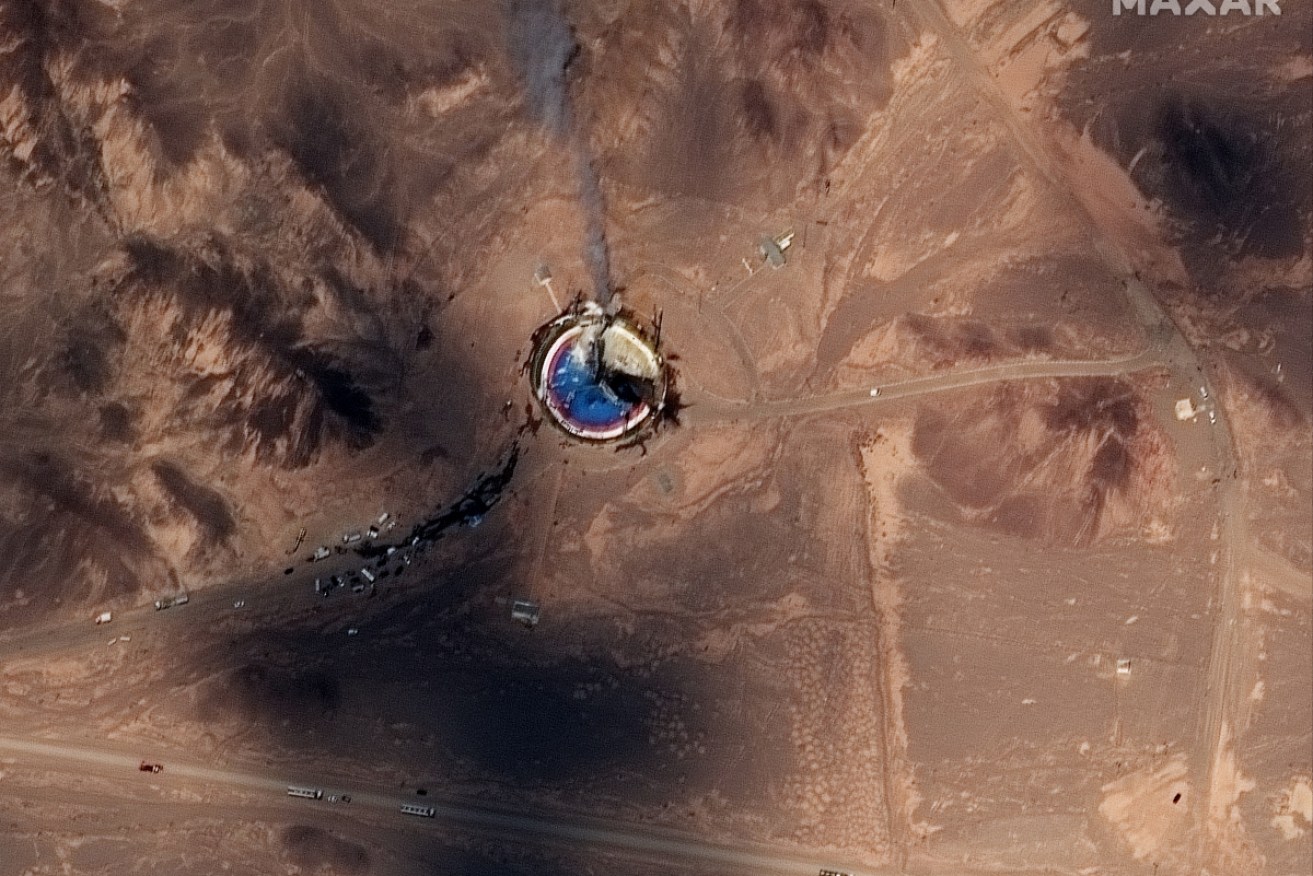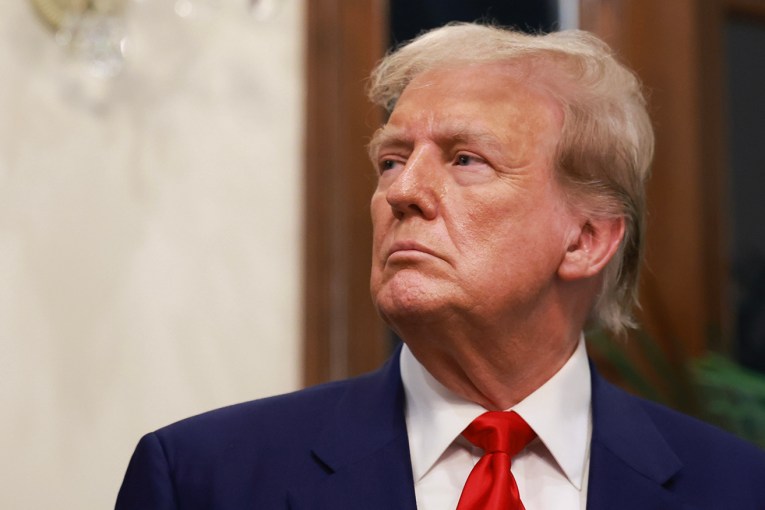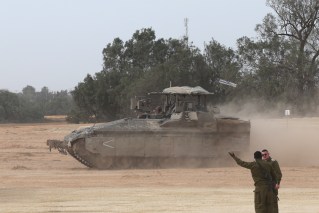Trump denies US responsibility in Iranian missile base explosion

In contrast to Mr Trump's hi-res image of the disaster, commercial company MAXAR Technologies captures the failed launch. Photo: AAP
A mysterious explosion on Thursday at an Iranian space centre prompted speculation that it was US sabotage, rather than an accident, that was responsible for the third successive failure of Tehran’s efforts to show it could loft satellites into orbit.
As pictures from commercial satellites of a rocket’s smoking remains began to circulate, President Donald Trump denied on Twitter on Friday that the United States was involved.
It was an unusual message because the Iranian government had neither acknowledged the accident nor blamed the United States.
His tweet ended with an apparent taunt: “I wish Iran best wishes and good luck in determining what happened” in the fiery accident.
But Mr Trump also included in his tweet a high-resolution image of the disaster, immediately raising questions about whether he had plucked a classified image from his morning intelligence briefing to troll the Iranians.
The United States of America was not involved in the catastrophic accident during final launch preparations for the Safir SLV Launch at Semnan Launch Site One in Iran. I wish Iran best wishes and good luck in determining what happened at Site One. pic.twitter.com/z0iDj2L0Y3
— Donald J. Trump (@realDonaldTrump) August 30, 2019
The president seemed to resolve the question Friday night on his way to Camp David when he told reporters, “We had a photo and I released it, which I have the absolute right to do.”
There is no denying that, even if it runs the risk of alerting adversaries to US abilities to spy from high over foreign territory.
And there is precedent for doing so in more calculated scenarios: President John F Kennedy declassified photographs of Soviet missile sites during the Cuban missile crisis in 1962.

A November 1962 photo of missile equipment loaded onto freighters dockside in Cuba. Photo: Getty
Or President George W Bush’s declassified pictures of Iraq in 2003 to support the faulty case that Saddam Hussein was producing nuclear and chemical weapons.

The US administration said the rebuilt facilities showed the Iraqis were capable of producing large amounts of chlorine that was far beyond its pre-Gulf war production levels, and could be quickly diverted to chemical weapons production. Photo: Getty
It was unclear if Mr Trump was using the explosion and the lurking suspicions among Iranians that the United States was again deep inside their nuclear and missile programs to force a negotiation or to undermine one.
Mr Trump’s comments came days after a Group of 7 summit at which France tried to organise talks between Mr Trump and President Hassan Rouhani of Iran.
Both Washington and Tehran seem to be manoeuvring to restart some kind of contact and perhaps reopen negotiations over Iran’s nuclear program.
At the same time, the United States is ratcheting up sanctions, and Iran is resuming nuclear activities it had suspended under a 2015 agreement with the Obama administration.
Commercial satellite photographs and the far more detailed image that Mr Trump released showed devastating damage at the Imam Khomeini Space Centre.
The rocket itself appeared to have disintegrated.
White House and intelligence officials declined to say whether the image Mr Trump tweeted came from his morning intelligence briefing, but other officials conceded it bore all of the markings of a spy-satellite image.
American officials have often accused Iran of conducting the launches, under the guise of its space program, to simulate the technology involved in deploying a conventional or nuclear warhead – an effort American officials have vowed to stop.
In February, the New York Times reported that the Trump administration had accelerated a secret US program to sabotage both Iran’s missiles and its rockets.
Two previous attempts at launching satellites – on January 15 and February 5 – failed. More than two-thirds of Iran’s satellite launches have failed over the past 11 years, a remarkably high number compared with the five per cent failure rate worldwide.
Mr Trump’s denial and the satellite image he released seemed meant to maximise Iran’s embarrassment over the episode.
“The United States of America was not involved in the catastrophic accident during final launch preparations for the Safir SLV Launch at Semnan Launch Site One in Iran,” he tweeted. “I wish Iran best wishes and good luck in determining what happened at Site One.”
If the accident was linked to a covert action by the United States – one that Mr Trump would have been required to authorise in a presidential “finding” – he and other American officials would be required by law to deny involvement.
Many in Iran will suspect American involvement in the string of unexplained disasters striking the country’s space program.

The Natanz uranium enrichment facility buildings in 2005 located 322 km south of Tehran. Photo: Getty
A decade ago, the United States and Israel were the prime players in a covert action, code-named “Olympic Games,” to sabotage Iran’s nuclear centrifuges using a hard-to-detect cyberattack at the Natanz nuclear enrichment plant.
Changes in computer code being fed to the centrifuges caused them to speed up or slow down, and to spin out of control.
In 2011, a huge explosion destroyed a major missile-testing site near Tehran, killing the military officer who oversaw the Iranian program.
Initially, the Iranians described that as an accident, but they later linked it to an Israeli program to assassinate nuclear scientists. Israeli officials have since hinted they were involved.
That explosion destroyed buildings at a vast development site. The explosion on Thursday appeared more isolated, limited to the launchpad, which was shown smouldering in satellite photographs released by Planet Labs.
Compare commercial imagery of Iran’s failed SLV launch (right) with what Trump tweeted (left). Who knows where the latter came from, but one thing seems clear: the technology that imaged it is much more advanced, and the analysts who annotated have a good deal of insight. pic.twitter.com/HuozqRmXcA
— Ned Price (@nedprice) August 30, 2019
But it was Mr Trump’s release of a satellite photograph that attracted the most discussion among intelligence officials. Several former officials noted that the upper left-hand corner, where the level of classification of the photograph would normally be denoted, was blacked out before Mr Trump tweeted the image.
That suggested a rushed effort by the United States to declassify it, presumably at Mr Trump’s command. A glare on the photograph suggested someone may have used a cellphone to take a picture of the image as it was displayed on a tablet computer, which is how classified images are often shown to the president during security briefings.
“You can bet every adversary is going to school on what’s been exposed,” James R Clapper Jr., a former director of national intelligence, said in an email. “I can’t see what the point was, other than to make fun of the Iranians.”
Good to know Donald … and hey, by the way, where does that image come from? The resolution is quite good. Any chance its from your daily National Intelligence Brief? https://t.co/GJZvZ9TFnO
— Daryl G Kimball (@DarylGKimball) August 30, 2019
Daryl G Kimball, executive director of the Arms Control Association, said the image posted by Mr Trump looked “far better than any commercial imagery” that has been released about the launch. Revealing the abilities of US satellite surveillance, he argued, does not advance US interests.
“This tweet is an excellent example of Trump’s aimless, impulsive thinking about many national security issues,” Mr Kimball said. “Why tweet that the United States was not involved when it may have been? Why, apparently sarcastically, wish them good luck in finding the cause for the accident?”

Iran’s long-range missiles add muscle to its threat to shut down the Gulf oil trade. Photo: Getty
Tehran announced its January rocket failure but said nothing about the one in February that was picked up by American intelligence officials. It has also said nothing officially about Thursday’s blast. Like many closed societies, Iran tends to hide its failures and exaggerate its successes.
While Tehran says the launchings are for peaceful purposes, American officials say the advancement of orbital rocketry can aid the development of intercontinental ballistic missiles – the kind that might one day threaten the United States with nuclear strikes.
David Schmerler, a senior research associate at the Middlebury Institute of International Studies, who closely examined the satellite imagery of Thursday’s blast, said there was no way to know if it was accidental or intentional.
“Something went wrong, and it ignited the fuel,” he said. “It could be sabotage or an accident. There’s no way to tell.”
-NewYorkTimes






